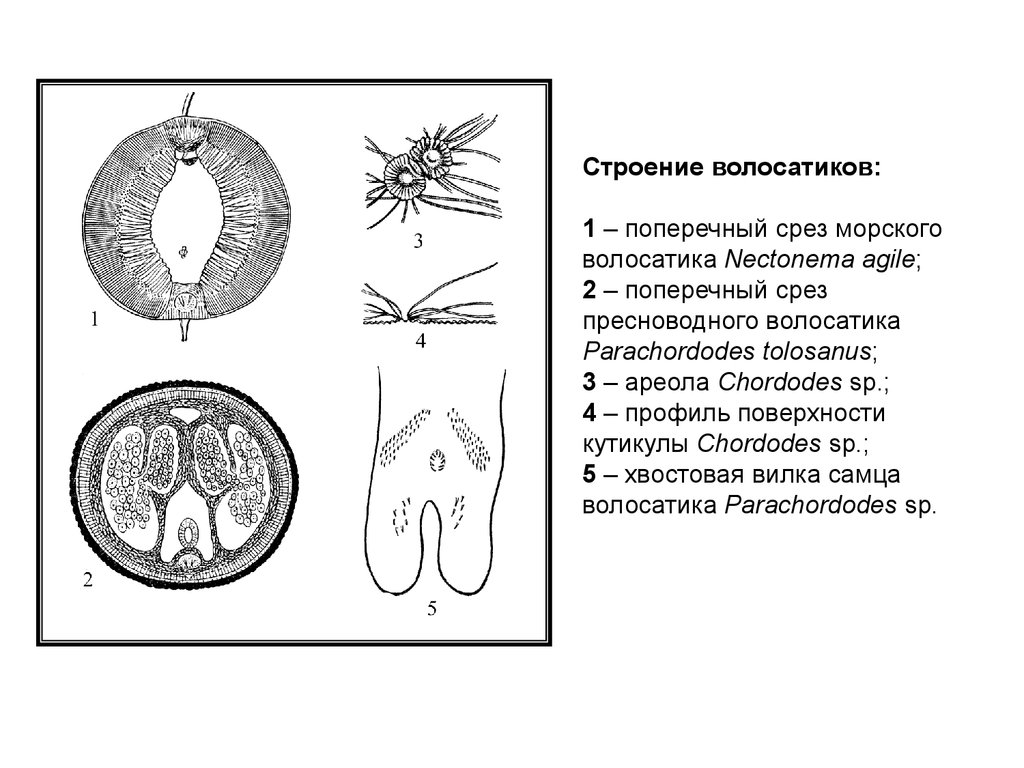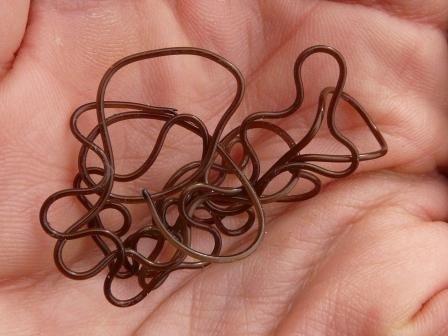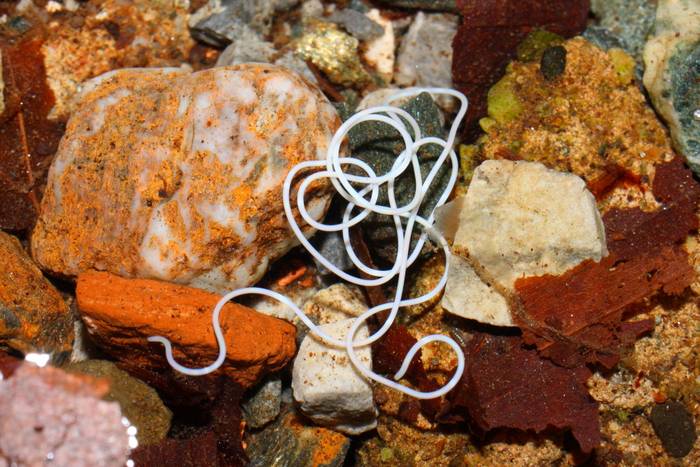Hairworms are a type, usually of parasitoid animals of the nematoid clade. These creatures are very cute free-living worms that look like nematodes. True, they are free living only at the adult stage of development, which is why they are called parasitoids.

Unlike nematodes, hairworms have a terminal cloaca, which acts as an excretion, and do not have spicules. Spicules are nematodes that open the female vulva to facilitate sperm transfer. I threw this as a random fact, so to speak, because you probably will not look into the cloaca and into the spicules of worms. Actually, therefore, the most important external differences between adult hairworms and nematodes for you will not be spicules, but as a rule, brown, or black, less often bright white, or white-black colors of the outer covers of the body, as well as a very tough and strong cuticle.
The quality of the hairy cuticle is well shown in the video here , in which they tried to tear the cuticle, and in the end they torn the pygidium of the grasshopper.

These sympathizers are also called horse hair, and this is no accident, because their body resembles living hair, with a considerable length. Once on a shallow pond, I managed to catch a hair worm more than 20 centimeters long. He wriggled in my arms, shining like a body in the sun. Later I examined him under a magnifying glass and released him. I found this creature very interesting, because I did not find what he could eat. Only later, having opened Bogolyubov's computer identifier for freshwater invertebrates in Russia [1], I read that the adults of these creatures really cannot eat.
![A fragment from this video under the heading [Scary_Cut down] A fragment from this video under the heading [Scary_Cut down]](https://habrastorage.org/getpro/habr/upload_files/f9d/405/dbe/f9d405dbe9c73b18f32c4b379bac5ee7.png)
, , . , .

- , , . , . , , ! [2], — ( ), () [3].
— , — . , , . , , . .
, , , . ( ) [4;5], ... ...

. , [6]. , . .

, , , . , , , , , . , . [6].
50—150 [6]. , . , , . , , , , , .

, , , - , , , . , [7]. , - , , . , .
, , . , , . — , , — . , , .

- .
:
1) http://ecosystema.ru/04materials/guides/10water.htm
2) PARASITISM AND ECOLOGICAL PARASITOLOGY, Yu.S. Balashov
Zoological Institute RAS, 2011.
3) https://ru.wikipedia.org/wiki/Metamorphosis
4) https://www.ncbi.nlm.nih.gov/pmc/articles/PMC4725239/
5) https://www.ncbi.nlm.nih.gov/pmc/articles/PMC3428576/
6) http://ecosystema.ru/08nature/w-invert/018.htm
7) Barnes, Robert D. (1982). Invertebrate Zoology. Philadelphia, PA: Holt-Saunders International. pp. 307-308